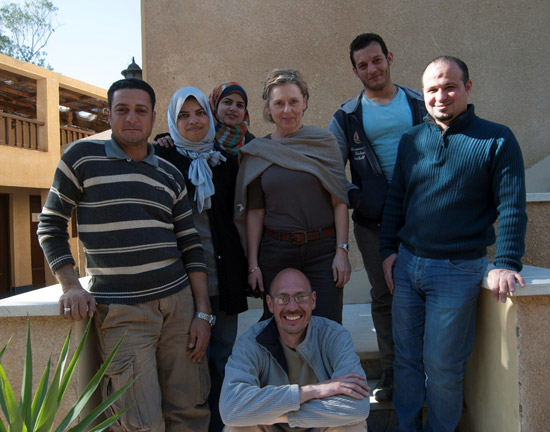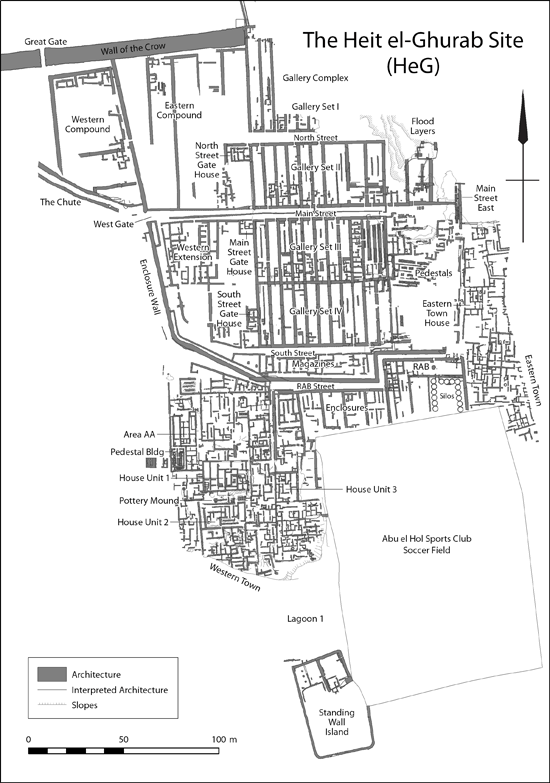By Samar Mahmoud (Field School Student, Inspector of the Ministry of Antiquities)
Firstly, let me seize the opportunity to express my feeling about joining such a great field school with the well-organized team held by AERA.
I am a member of the Field School Group 2 team along with Dan, Essam, Hazem, Nehad, Debra and Mohamed. Together we are carrying on the analysis of the Standing Wall Island (SWI) area of the Heit el-Ghurab (HeG) site at Giza. We start work at 7am and the first thing we do is go to the storeroom to get the equipment we need for the day. When we walk to the storeroom Debra takes photos of us, the sky, or horses.

AERA 2015 Field School Group 2. Standing (from left to right) Essam, me, Nehad, Debra, Hazem, Mohamed, and Dan (sitting). Photo by Yasser Mahmoud.
There are three groups in the 2015 AERA field school. Group 1 is working away from us in an area called AA-South which is next to the very interesting Pedestal Building. Field School Group 3 are our neighbors and also working in Standing Wall Island (SWI).
Standing Wall Island is at the southern end of the HeG site west of the “Abu el Hol Sports Club” and within the southern tip of the western town of HeG. What is interesting about SWI is its slightly west of north orientation when compared to the rest of the HeG site. There are also no other buildings like it on the site.

GIS map of the HeG site by Rebekah Miracle 2014.
The northern part of SWI was first discovered and mapped in 2004 and was made up of two structures – Enclosure 1 (ES1) on the west and Enclosure 2 (ES2) on the east. In 2011 the southern part of SWI was discovered showing how large the whole structure was. The newly discovered wall had curved internal corners. The features of building led to suggestions that this building may be Old Kingdom cattle corral.
My group is working in ES1 and our neighbours in field school group 3 are working in ES2. Even though we are two different groups we are one big family. Together our mission this season is to see if we can find any information that the SWI was a cattle corral or not. We also want to know how the structure was built and the changes it went through. Finally, we also want to investigate the doorways and try and understand how people moved from room to room.
We will see!
